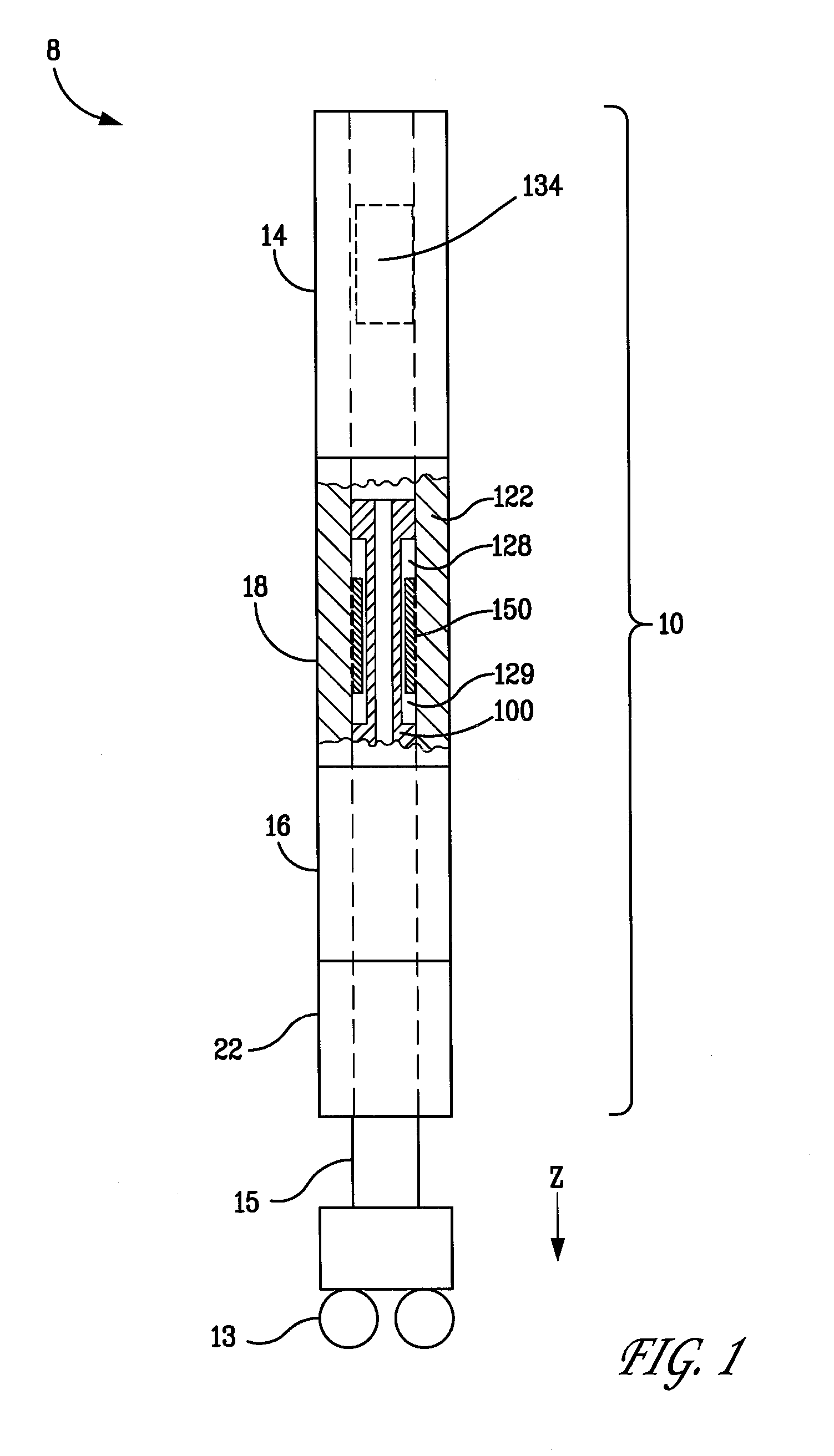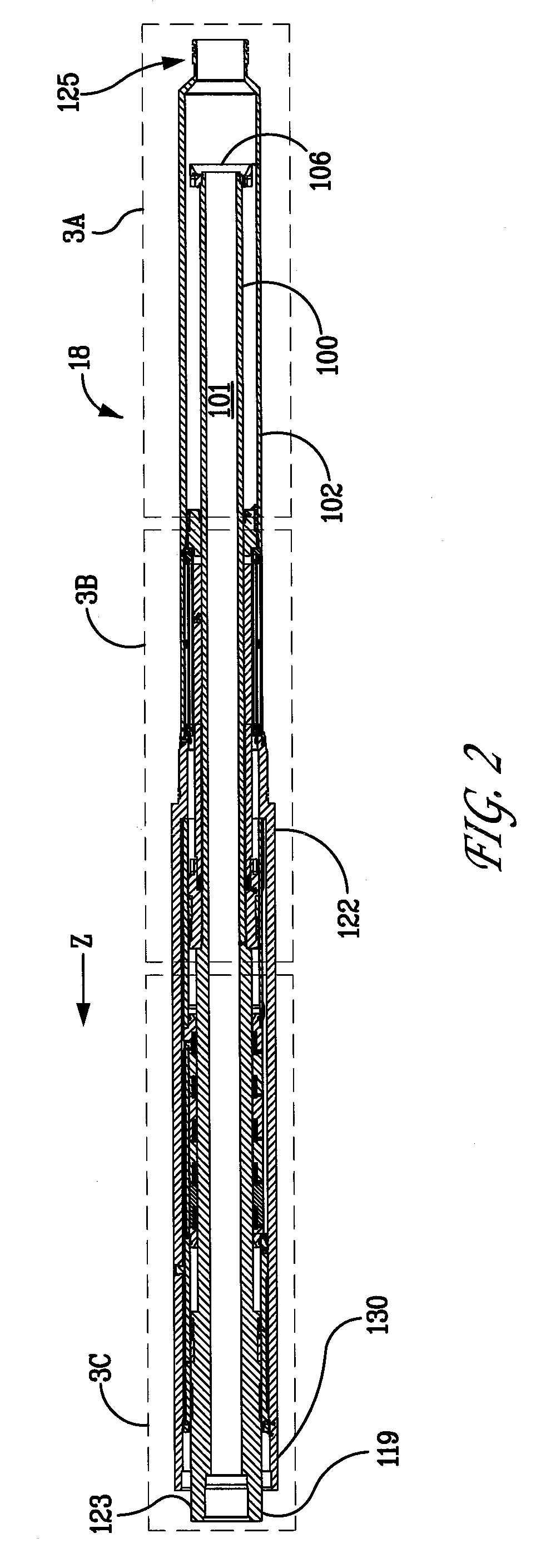System and method for damping vibration in a drill string using a magnetorheological damper
a magnetorheological damper and drill string technology, which is applied in the direction of drilling/well accessories, sealing/packing, and surveying, can solve the problems of reducing the penetration rate of the drill bit into the drilling surface, affecting the drilling effect, and inducing substantial vibration and shock into the drill string, so as to reduce alter the viscosity of the mr fluid. , the effect of reducing the induced remanent magnetic field
- Summary
- Abstract
- Description
- Claims
- Application Information
AI Technical Summary
Benefits of technology
Problems solved by technology
Method used
Image
Examples
Embodiment Construction
[0029]The figures depict a preferred embodiment of a vibration damping system 10. As shown in FIG. 1, the vibration damping system 10 can be incorporated into a downhole portion of a drill string 8 to dampen vibration of a drill bit 13 located at a down-hole end of the drill string.
[0030]The downhole portion of the drill string 8 includes a power module 14. The vibration damping system 10 comprises a torsional bearing assembly 22 and a spring assembly 16, each of which is discussed more fully in the aforementioned U.S. Pat. No. 7,219,752. In addition, located between the spring assembly 16 and the power module 14 is a magnetorheological (“MR”) valve assembly 18. The MR valve assembly 18 and the spring assembly 16 can produce axial forces that dampen vibration of the drill bit 13. The magnitude of the damping force can be varied by the MR valve assembly 18 in response to the magnitude and frequency of the drill bit vibration after the drill bit has temporarily ceased operation, for e...
PUM
 Login to View More
Login to View More Abstract
Description
Claims
Application Information
 Login to View More
Login to View More - R&D
- Intellectual Property
- Life Sciences
- Materials
- Tech Scout
- Unparalleled Data Quality
- Higher Quality Content
- 60% Fewer Hallucinations
Browse by: Latest US Patents, China's latest patents, Technical Efficacy Thesaurus, Application Domain, Technology Topic, Popular Technical Reports.
© 2025 PatSnap. All rights reserved.Legal|Privacy policy|Modern Slavery Act Transparency Statement|Sitemap|About US| Contact US: help@patsnap.com



